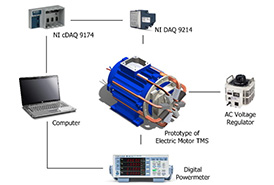Initially, electric vehicles faced confusion regarding their systems and maintenance. However, they are now replacing combustion engine vehicles, with thermal management being a critical concern. In conventional vehicles, the cooling system removes heat from the engine, but in electric vehicles, it involves cooling the batteries, power electronic systems, and motor. Maintaining optimal temperatures is vital for the efficient operation of electric vehicles, preserving battery charge, health, and capacity, and showcasing the best working profile of power electronic systems and motors.

Battery thermal management is critical since the battery’s performance, service life, and cost depend on optimal temperatures. Power electronic systems control the electric motor and are vulnerable to thermal effects. Improper thermal management can result in control glitches, component failures, and vehicular mal-operations. The working temperature of the electric motor is critical to the vehicle’s performance, and cooling is necessary for its full potential. The cooling loop regulates optimal temperatures, and a coolant is circulated to cool the batteries, electronics, motor, and related systems. Radiators release heat to the ambient air, and the air conditioning system cools the systems within the cooling loop.
Adapting to external-internal temperature conditions, thermal management is crucial for an electric vehicle’s driveability and safety. Deepak Engineering offers processors that can address critical automotive problems and safety requirements.
Importance
Efficient cooling and refrigerant circuit interaction is crucial in fully electric vehicles, as it significantly impacts overall vehicle efficiency more than in ICE or hybrid electric powertrains. During cold weather, the heater in an electric car consumes as much energy to warm the cabin as the car uses for propulsion. Maximizing the heater’s efficiency in utilizing heat dissipated by other units improves the car’s range. A reversible heat pump in the refrigerant circuit provides additional heating and can increase electrical energy diverted from the traction battery by up to five times. It can also be used for cooling when necessary.